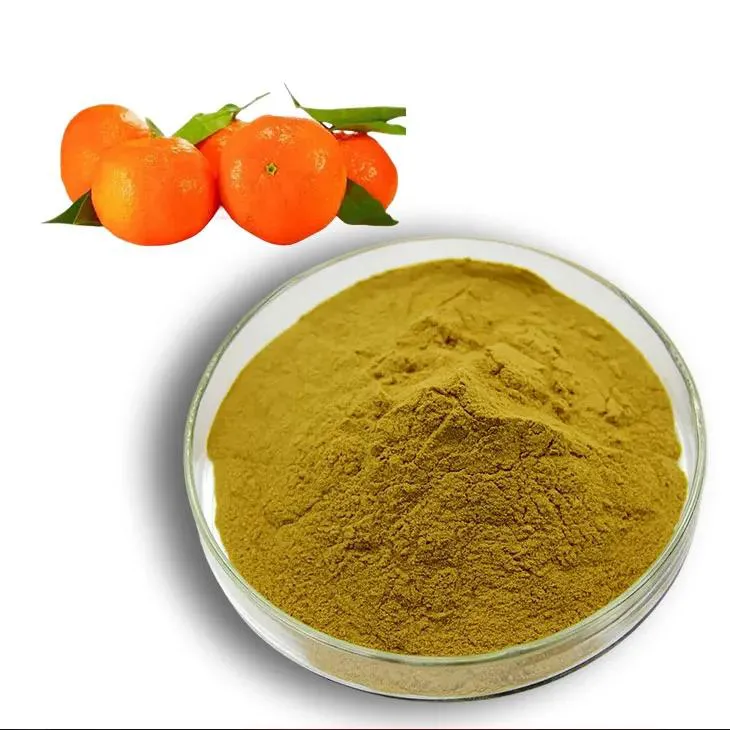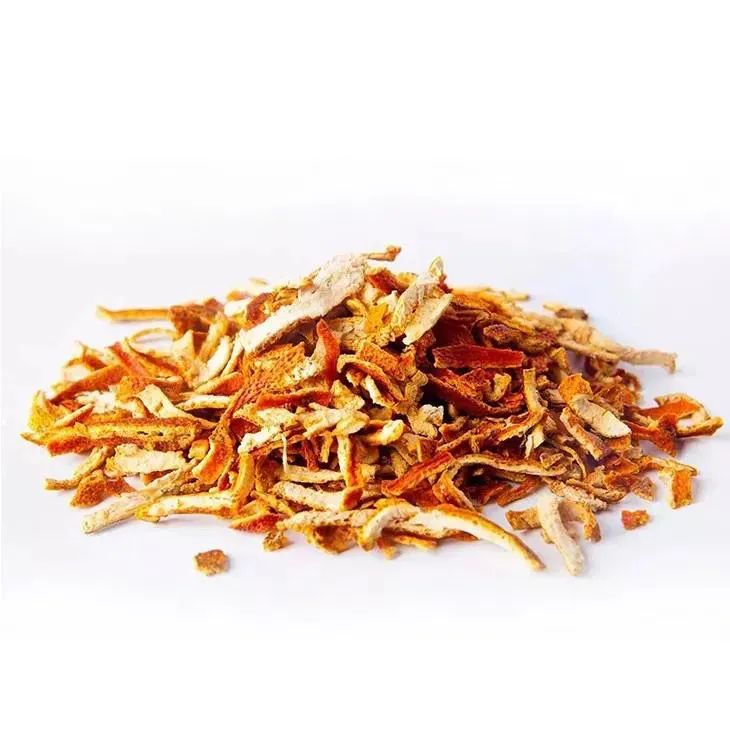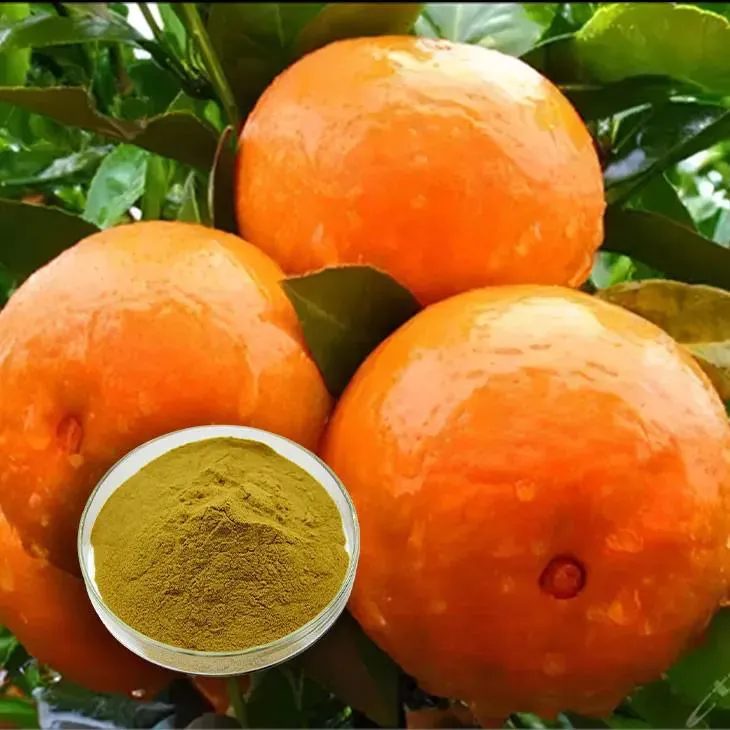- 0086-571-85302990
- sales@greenskybio.com
The process of extracting citrus polymethoxyflavones from citrus bioflavonoids.
2024-11-28

1. Introduction
Citrus fruits are well - known for their rich content of bioflavonoids. Among these bioflavonoids, citrus polymethoxyflavones (PMFs) have attracted significant attention in recent years. PMFs possess a wide range of biological activities, which make them valuable in both the medical and food industries. However, extracting PMFs from the complex matrix of Citrus bioflavonoids is a challenging task. This article aims to comprehensively discuss the extraction process, its significance, and ways to optimize it for better results.

2. Sources of Citrus bioflavonoids
Citrus fruits such as oranges, lemons, grapefruits, and mandarins are the primary sources of Citrus bioflavonoids. The peel, in particular, contains a high concentration of these compounds. Bioflavonoids in citrus fruits play important roles in plant defense mechanisms against pathogens and environmental stresses. In addition to the peel, the pulp and seeds also contain a certain amount of bioflavonoids, although in relatively lower concentrations compared to the peel.

3. Properties of Citrus Polymethoxyflavones
3.1 Chemical Structure
Citrus PMFs are characterized by their unique chemical structure. They have multiple methoxy groups attached to the flavone backbone. This structural feature is associated with their distinct biological activities. For example, the methoxy groups can influence the solubility, stability, and interaction of PMFs with biological targets.3.2 Biological Activities
- Antioxidant Activity: PMFs can scavenge free radicals, protecting cells from oxidative damage. This antioxidant property is beneficial in preventing various diseases associated with oxidative stress, such as cancer, cardiovascular diseases, and neurodegenerative disorders.
- Anti - inflammatory Activity: They can modulate the inflammatory response by inhibiting the production of inflammatory mediators. This makes them potential candidates for the treatment of inflammatory diseases like arthritis.
- Anticancer Activity: Some studies have shown that PMFs can induce apoptosis (programmed cell death) in cancer cells, inhibit tumor cell proliferation, and prevent cancer metastasis.

4. Extraction Methods
4.1 Solvent Extraction
- Choice of Solvent: Solvent extraction is a commonly used method for extracting PMFs from citrus bioflavonoids. Organic solvents such as ethanol, methanol, and ethyl acetate are often used. Ethanol is a popular choice due to its relatively low toxicity and high solubility for many flavonoids. However, the choice of solvent depends on the specific properties of the target PMFs and the matrix of the citrus material.
- Extraction Procedure: The extraction process typically involves grinding the citrus material (peel, pulp, or seeds) into a fine powder, followed by soaking it in the selected solvent for a certain period. The mixture is then stirred or shaken to ensure good contact between the solvent and the bioflavonoid - rich material. After extraction, the solvent is evaporated to obtain the crude extract containing PMFs.
4.2 Supercritical Fluid Extraction (SFE)
- Principle: Supercritical fluid extraction utilizes the properties of a supercritical fluid, usually carbon dioxide (CO₂), which has the characteristics of both a gas and a liquid. In the supercritical state, CO₂ has high diffusivity and low viscosity, enabling it to penetrate the matrix of citrus bioflavonoids effectively and extract PMFs.
- Advantages: SFE has several advantages over traditional solvent extraction methods. It is a more environmentally friendly process as it does not leave behind toxic solvent residues. It also offers better selectivity for extracting specific PMFs, and can operate at relatively low temperatures, which is beneficial for preserving the bioactivity of the extracted flavones.
- Limitations: However, the equipment for SFE is relatively expensive, which may limit its widespread application in small - scale extraction operations.
4.3 Microwave - Assisted Extraction (MAE)
- Mechanism: Microwave - assisted extraction uses microwave energy to heat the solvent and the citrus material simultaneously. This rapid heating promotes the release of PMFs from the bioflavonoid matrix. The microwaves cause the molecules in the material to vibrate, creating internal heating, which can enhance the extraction efficiency.
- Benefits: MAE can significantly reduce the extraction time compared to traditional solvent extraction methods. It also has the potential to improve the yield of PMFs. Additionally, it is a relatively simple and cost - effective extraction technique.
- Drawbacks: However, improper control of microwave power and extraction time can lead to degradation of the target PMFs, and the method may not be suitable for large - scale industrial extraction without further optimization.
5. Optimization of the Extraction Process
5.1 Parameter Optimization
- Solvent Concentration: For solvent extraction methods, the concentration of the solvent can significantly affect the extraction efficiency. For example, in ethanol extraction, different ethanol - water ratios may result in different yields of PMFs. By systematically varying the solvent concentration and measuring the extraction yield, an optimal concentration can be determined.
- Extraction Time: The extraction time is another critical parameter. Too short an extraction time may result in incomplete extraction of PMFs, while too long a time may lead to degradation or co - extraction of unwanted compounds. Through experimental studies, an appropriate extraction time can be established for each extraction method.
- Temperature: Temperature also plays an important role in the extraction process. In general, increasing the temperature can enhance the solubility of PMFs in the solvent, but excessive heat can cause degradation. Therefore, a balance needs to be found to optimize the extraction temperature.
5.2 Pretreatment of Raw Materials
- Drying: Drying the citrus materials before extraction can affect the extraction efficiency. Different drying methods such as air drying, oven drying, and freeze - drying can have different impacts on the structure and content of bioflavonoids. Freeze - drying is often considered a better option as it can preserve the bioactivity of the bioflavonoids to a greater extent.
- Particle Size Reduction: Grinding the citrus materials into a finer powder can increase the surface area available for extraction, thereby improving the extraction efficiency. However, overly fine particles may also cause problems such as clogging during the extraction process.
6. Purification of Citrus Polymethoxyflavones
After extraction, the obtained crude extract contains not only PMFs but also other bioflavonoids and impurities. Therefore, purification is necessary to obtain high - purity PMFs.
6.1 Column Chromatography
- Principle: Column chromatography is a widely used purification method. It separates the components in the crude extract based on their differential affinities for the stationary phase and the mobile phase. For PMF purification, silica gel columns are often used. The crude extract is loaded onto the top of the column, and a suitable solvent system is used to elute the components. PMFs with different polarities are separated as they move through the column at different rates.
- Procedure: First, the column is packed with the stationary phase (silica gel). Then, the crude extract is dissolved in a small amount of solvent and carefully loaded onto the column. The elution is carried out using a gradient of solvents with increasing polarity. The fractions containing PMFs are collected and further analyzed.
6.2 High - Performance Liquid Chromatography (HPLC)
- Principle: HPLC is a more advanced purification and analysis method. It uses a high - pressure pump to force the solvent (mobile phase) through a column filled with a stationary phase. The separation of PMFs is based on their different interactions with the stationary and mobile phases. HPLC can achieve high - resolution separation and accurate quantification of PMFs.
- Advantages: HPLC offers high sensitivity, selectivity, and reproducibility. It can separate complex mixtures of PMFs with high precision, making it an ideal method for purifying and analyzing PMFs in research and quality control applications.
7. Significance of Citrus Polymethoxyflavones in Medicine
7.1 Therapeutic Applications
- As mentioned earlier, the antioxidant, anti - inflammatory, and anticancer properties of PMFs make them potential candidates for the development of new drugs. For example, in the treatment of cardiovascular diseases, PMFs can help reduce oxidative stress, inflammation, and lipid peroxidation in blood vessels, thereby improving cardiovascular health.
- In the field of cancer therapy, PMFs may be used in combination with existing chemotherapeutic agents to enhance the efficacy of treatment and reduce side effects. Their ability to induce apoptosis in cancer cells and inhibit tumor cell proliferation shows great promise in cancer research.
7.2 Dietary Supplements
- PMFs can also be used as dietary supplements. Due to their natural origin and beneficial biological activities, they can be added to functional foods or nutraceutical products. For consumers, taking PMF - containing supplements may help boost their antioxidant defenses, reduce inflammation, and potentially lower the risk of chronic diseases.
8. Significance of Citrus Polymethoxyflavones in Food
8.1 Food Preservation
- The antioxidant activity of PMFs makes them useful in food preservation. They can prevent the oxidation of fats and oils in food products, thereby extending the shelf life of foods. This is particularly important for processed foods that are prone to rancidity.
8.2 Flavor and Color Enhancement
- PMFs can also contribute to the flavor and color of food products. They can impart a characteristic citrus flavor and enhance the natural color of citrus - based products. This can improve the sensory quality of foods, making them more appealing to consumers.
9. Conclusion
The extraction of citrus polymethoxyflavones from citrus bioflavonoids is a complex but important process. Different extraction methods, including solvent extraction, supercritical fluid extraction, and microwave - assisted extraction, each have their own advantages and limitations. Optimization of the extraction process through parameter adjustment and pretreatment of raw materials can improve the yield and purity of PMFs. Purification methods such as column chromatography and HPLC are essential for obtaining high - quality PMFs. The significance of PMFs in medicine and food industries cannot be overstated, as they offer potential health benefits and can enhance the quality of food products. Future research should focus on further optimizing the extraction and purification processes, exploring new applications of PMFs, and understanding their mechanisms of action at the molecular level.
FAQ:
What are the main sources of citrus bioflavonoids?
Citrus bioflavonoids are mainly sourced from various citrus fruits such as oranges, lemons, grapefruits, etc. These fruits contain a rich amount of bioflavonoids which serve as the starting material for the extraction of citrus polymethoxyflavones.
What are the common extraction methods for citrus polymethoxyflavones?
Common extraction methods include solvent extraction, where suitable solvents are used to dissolve and separate the polymethoxyflavones from the citrus bioflavonoids. Another method is supercritical fluid extraction which uses supercritical fluids like carbon dioxide under specific conditions. Microwave - assisted extraction is also used sometimes, which speeds up the extraction process by using microwave energy.
Why are citrus polymethoxyflavones significant in the medical field?
Citrus polymethoxyflavones have shown various biological activities in the medical field. They may have antioxidant properties, which can help in preventing oxidative damage in cells. They also might possess anti - inflammatory effects, potentially being useful in treating inflammatory diseases. Additionally, some studies suggest that they could have anti - cancer properties by interfering with cancer cell growth and proliferation.
How can the purity of the extracted citrus polymethoxyflavones be improved?
To improve the purity, multiple purification steps can be employed. For example, after the initial extraction, techniques like chromatography (such as column chromatography or high - performance liquid chromatography) can be used to separate and purify the polymethoxyflavones from other impurities present in the extract. Also, careful selection of extraction solvents and optimization of extraction conditions can contribute to higher purity.
What are the challenges in the extraction process of citrus polymethoxyflavones?
Some challenges include the selection of the most appropriate extraction method considering factors like cost, efficiency, and environmental impact. Another challenge is to ensure high yield without sacrificing purity. Also, dealing with the complexity of the citrus bioflavonoid matrix and separating the target polymethoxyflavones from other similar compounds can be difficult.
Related literature
- Extraction and Characterization of Citrus Polymethoxyflavones for Nutraceutical Applications"
- "Optimization of the Extraction Process of Citrus Polymethoxyflavones: A Review"
- "The Role of Citrus Polymethoxyflavones in Food and Pharmaceutical Industries: An Overview of Their Extraction and Functional Properties"
- ▶ Hesperidin
- ▶ Citrus Bioflavonoids
- ▶ Plant Extract
- ▶ lycopene
- ▶ Diosmin
- ▶ Grape seed extract
- ▶ Sea buckthorn Juice Powder
- ▶ Fruit Juice Powder
- ▶ Hops Extract
- ▶ Artichoke Extract
- ▶ Mushroom extract
- ▶ Astaxanthin
- ▶ Green Tea Extract
- ▶ Curcumin
- ▶ Horse Chestnut Extract
- ▶ Other Product
- ▶ Boswellia Serrata Extract
- ▶ Resveratrol
- ▶ Marigold Extract
- ▶ Grape Leaf Extract
- ▶ New Product
- ▶ Aminolevulinic acid
- ▶ Cranberry Extract
- ▶ Red Yeast Rice
- ▶ Red Wine Extract
-
Oat Straw Extract Powder
2024-11-28
-
Angelica sinensis extract
2024-11-28
-
White mustard seed extract
2024-11-28
-
Beta Carotene
2024-11-28
-
Oyster Mushroom Extract Powder
2024-11-28
-
Cassia Seed Extract
2024-11-28
-
Red Date Extract
2024-11-28
-
Curcuma Longa Extract
2024-11-28
-
Fig Extract
2024-11-28
-
Saffron Extract Powder
2024-11-28





















